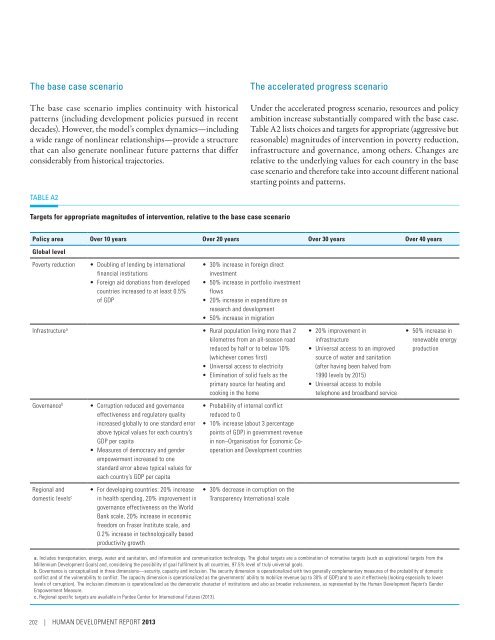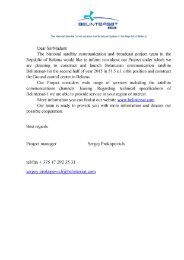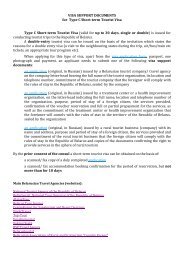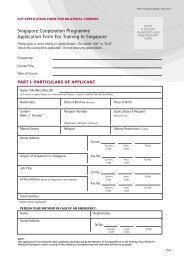Human Development Report 2013 - UNDP
Human Development Report 2013 - UNDP
Human Development Report 2013 - UNDP
You also want an ePaper? Increase the reach of your titles
YUMPU automatically turns print PDFs into web optimized ePapers that Google loves.
The base case scenarioThe base case scenario implies continuity with historicalpatterns (including development policies pursued in recentdecades). However, the model’s complex dynamics—includinga wide range of nonlinear relationships—provide a structurethat can also generate nonlinear future patterns that differconsiderably from historical trajectories.The accelerated progress scenarioUnder the accelerated progress scenario, resources and policyambition increase substantially compared with the base case.Table A2 lists choices and targets for appropriate (aggressive butreasonable) magnitudes of intervention in poverty reduction,infrastructure and governance, among others. Changes arerelative to the underlying values for each country in the basecase scenario and therefore take into account different nationalstarting points and patterns.Table A2Targets for appropriate magnitudes of intervention, relative to the base case scenarioPolicy area Over 10 years Over 20 years Over 30 years Over 40 yearsGlobal levelPoverty reduction• Doubling of lending by internationalfinancial institutions• Foreign aid donations from developedcountries increased to at least 0.5%of GDP• 30% increase in foreign directinvestment• 50% increase in portfolio investmentflows• 20% increase in expenditure onresearch and development• 50% increase in migrationInfrastructure a • Rural population living more than 2kilometres from an all-season roadreduced by half or to below 10%(whichever comes first)• Universal access to electricity• Elimination of solid fuels as theprimary source for heating andcooking in the homeGovernance bRegional anddomestic levels c• Corruption reduced and governanceeffectiveness and regulatory qualityincreased globally to one standard errorabove typical values for each country’sGDP per capita• Measures of democracy and genderempowerment increased to onestandard error above typical values foreach country’s GDP per capita• For developing countries: 20% increasein health spending, 20% improvement ingovernance effectiveness on the WorldBank scale, 20% increase in economicfreedom on Fraser Institute scale, and0.2% increase in technologically basedproductivity growth• Probability of internal conflictreduced to 0• 10% increase (about 3 percentagepoints of GDP) in government revenuein non–Organisation for Economic Cooperationand <strong>Development</strong> countries• 30% decrease in corruption on theTransparency International scale• 20% improvement ininfrastructure• Universal access to an improvedsource of water and sanitation(after having been halved from1990 levels by 2015)• Universal access to mobiletelephone and broadband service• 50% increase inrenewable energyproductiona. Includes transportation, energy, water and sanitation, and information and communication technology. The global targets are a combination of normative targets (such as aspirational targets from theMillennium <strong>Development</strong> Goals) and, considering the possibility of goal fulfilment by all countries, 97.5% level of truly universal goals.b. Governance is conceptualized in three dimensions—security, capacity and inclusion. The security dimension is operationalized with two generally complementary measures of the probability of domesticconflict and of the vulnerability to conflict. The capacity dimension is operationalized as the governments’ ability to mobilize revenue (up to 30% of GDP) and to use it effectively (looking especially to lowerlevels of corruption). The inclusion dimension is operationalized as the democratic character of institutions and also as broader inclusiveness, as represented by the <strong>Human</strong> <strong>Development</strong> <strong>Report</strong>’s GenderEmpowerment Measure.c. Regional specific targets are available in Pardee Center for International Futures (<strong>2013</strong>).202 | HUMAN DevELoPMENt REPort <strong>2013</strong>
















